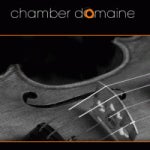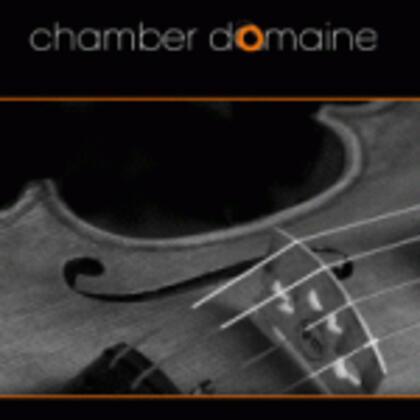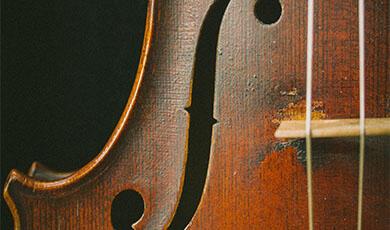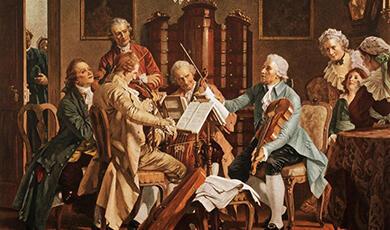Haydn in London - London: The place to be seen and heard
Share
- Details
- Transcript
- Audio
- Downloads
- Extra Reading
This concert will explore Haydn's visit to London and recreate the type of programme what would have been heard at the legendary Salomon Concerts in Hanover Square. Salomon was instrumental in persuading Haydn to visit London where the composer performed his own works and those of his contemporaries.
The talk will be concerned with London's insatiable appetite for classical concerts and the emergence of the cult of the performer. The concert will include a rare performance of Salomon's arrangement of Haydn's Symphony 95 in C Minor and the cantatas Adriadne auf Naxos and Lines from the Battle of the Nile, which were once performed by Lady Hamilton.
2009 marks the 200th anniversary of Haydn's death and this event is part of the series of concerts that puts his fantastic instrumental chamber music and song into its social and cultural context. Each concert will be proceeded by a talk by Thomas Kemp, the artistic director of Chamber Domaine, recently praised in The Guardianfor its "dynamic commitment and high virtuosity. A breath of fresh air."
The pieces performed were:
Haydn - Arianna a Naxos
Recitative: Teseo mio ben
Aria: Dove sei, mio bel Tesoro?
Recitative: Ma, a chi parlo?
Aria: Ah! che morir vorrei in si fatal momento
Haydn - Lines from the Battle of the Nile
Recitative: Ausania, trembling 'midst unnumbered woes
Aria: Blest leader!
Haydn arr Salomon - Symphony No 97 Hob.1: 97
Adagio - Vivace
Adagio ma non troppo
Menuetto and Trio
Spiritoso
The other concerts in the series Haydn in London include:
The Enlightenment and Revolution
The Revolutionary Drawing Room
Papa Haydn or Genial Revolutionary?
Download Transcript
HAYDN IN LONDON -
LONDON: THE PLACE TO BE SEEN AND HEARD
Thomas Kemp
Tonight's concert will begin with Scenes from the Battle of the Nile. It concerns the battle of 1798, when Nelson was out with his fleet and he worked out that the French were in the port of Aboukir, and he decided to attack. This surprise attack led to one of the greatest naval victories of all time, the Battle of the Nile, which left the French fleet were completely annihilated.
One of Nelson's friends, and she was also a friend of the William Hamilton who was the British Ambassador to Naples at the time, wrote a poem,Ode on the Battle of the Nile. It is the words to this ode which are set by Haydn in this particular piece. The words are incredibly patriotic, and if you are French, please don't listen too carefully to the text!
Haydn was a very famous figure by this stage. He was actually quite an old man as well. When he went back to Vienna from London in 1798, he managed to buy a house with the proceeds from his London concerts. It was in this house that Haydn was visited by Nelson on his return from the Nile. When Nelson, with William and Emma Hamilton, came back victorious from the Battle of the Nile, they went via Naples, and then to Vienna, where they visited Haydn. It was here that Nelson heard what eventually was to become the Nelson Mass, which Haydn had written. When Nelson died, Haydn dedicated the mass to him, and this piece is one of his great choral and orchestral works. If you are a great fan of the Fifth Beethoven Symphony, and the kind of military topic in the classical style, this particular mass is full of dotted rhythms and trumpets, and it is very military in its outlook.
The Hamiltons were something of a dysfunctional pair, and Nelson was obviously having his way with Emma Hamilton, who, by all accounts, had managed to sleep with pretty much everybody that was anybody in London, and everywhere else as well! Haydn did not have a relationship with her, but what he did do was to perform with her in Vienna, in a private concert, at which Nelson was present. Nelson was so taken with this that he gave Haydn his pocket watch which he had with him at the Battle of the Nile. So there was a friendship there, as was further shown by the fact that when Haydn went back to Eisenstadt, Nelson and the Hamiltons stayed in the Castle of Eisenstadt for four days, shortly after their trip to Vienna.
By this time, 1800, Haydn was quite old and frail, and he had plans, possibly, to go back to London, but the only two trips that he actually made were in the 1790s.
The symphony that is also on today's programme is one of the London Symphonies. It was actually the last piece that he finished composing in London on his first trip in 1792. It is in an arrangement made by Johann Peter Salomon, who was a German violinist and something of a concert fixer and performer. He was the person that went to Eisenstadt when the Elector died, and persuaded Haydn to come to London to give concerts, to write his music and be presented to all the great figures of the day. By all accounts, Johann Peter Salomon was a very shrewd businessman, and he managed to secure the rights to Haydn's London Symphonies, which enabled him basically to do what he wanted with these manuscripts, and of course, during this time, there was a great craze for any kind of new musical material that people could play. Concert halls, as they exist now, did not exist back then, and many of the functions of the music was chamber music in people's homes or in small rooms, particularly in taverns. There are many pubs in London where tavern concerts would have been the first place that people would have heard Mozart and Beethoven's music.
This particular arrangement by Salomon is basically an economic exercise in making money out of Haydn's compositions. It is an arrangement for piano, string quartet and flute. Believe it or not, the flute was an incredibly fashionable instrument in the late 18th Century, and particularly in France. One of the interesting facts about London at the time of Haydn's visit in 1792 was that it was full of French people that had fled from the French Revolution, so perhaps the reason why the flute is included is because maybe there was a couple of exiled French flute players looking for work. In fact, I am told that there used to be flute clubs that men used to join, as it was seen as an attribute to play the flute well in order to acquaint yourself with the women of the right kind of quality. So the flute was perhaps something of a wooing instrument. So maybe Salomon had that in mind as well when he arranged a little flute ditty in this particular symphony.
The classical style that Haydn developed is one where he takes different musical types, it could be a minuet, it could be a scherzo, it could be some kind of dance, some kind of aria, recitative, it could be a waltz, it could be a lendler, or it could be something that is imitating something, like a drum or a trumpet, dotted rhythms, military. What he is doing in his music is putting together these different types of music, bar by bar, rather than in whole sections. So what you are getting is a juxtaposition of different types of music that existed through the 17th and 18thCenturies, and by putting these things together into a taut and very analytical and precise structure, he was able to create a new type of music. You can hear that with this Symphony 97. Once the allegro movement starts, there is a lot of dotted rhythms and it sounds very militarial, but he will start off with something like that, and then contrast that with something much more lyrical and singing, so that is the aria type. Then, in the development section, where things really hot up, he will subject these themes to lots of different treatments, by passing through unfamiliar keys, by suddenly stopping - you will hear quite long silences in there before it all starts again. It is basically trying to keep the listener on their toes the whole time, constantly trying to make people think about what this music means, not allowing a listener just to sit and let the music wash over them. So, in this way, it is quite a radical aesthetic that Haydn was developing, and one which Beethoven and Mozart were to develop too. But it is important to remember that Haydn was really at the centre of this, right from the 1780s and 1790s, even though it is very easily forgotten now.
Going back to the idea of Nelson, what we have emerging at the end of the 18th Century is really something that sets us up for today's world. When you listen to this Scenes from the Battle of the Nile, the music and the words are very heroic, and Nelson was a hero. When Haydn was in London, Haydn was treated like a musical hero. It was really one of the first times in history that individuals from ordinary backgrounds became leading figures; sort of liberated figures at the very top of what humans were capable of doing. This is something that gradually emerges during the Enlightenment of the 18th Century, and Haydn and Nelson were two of these key players, if you like. What you find, after Haydn's death, is it is Mozart that becomes the romantic hero; he becomes the genius, where all this supposed god-given talent becomes something greater. It was that kind of romanticism that led to the cult of the virtuoso, with people like Paganini and Liszt in the 19th Century. But in the time of Haydn, it is much more about rationality: the music is much more rational; the concept is very much more intellectual, and fun at the same time. What you will hear in the first aria is something that sounds very much like Mozart, and in fact, it is probably a quotation. People would have known this music; there is a musical joke going on the whole time, even although it might sound quite serious.
The other piece on tonight's programme, Ariadne, is another set of songs - it is kind of like a cantata - which was also written at the very beginning of his time in London, and it would have been widely performed. This piece, together with the Battle of the Nile, was something that Emma Hamilton sang, with Haydn at the piano.
An interesting aspect of this idea of the cult of the virtuoso is that Haydn was obviously a great performing musician, but when he came to London, he was not playing his piano concertos; what he was doing was directing the orchestra with his symphonies, playing at the keyboard. So the keyboard was a kind of integral part of the orchestra then. The idea that these things were fixed in stone was one that has only really occurred in the 20th Century, where scholarship has become very important, where people want to know exactly how things were done at a certain point of time, but in Haydn's day, this did not really exist. When he was in Eisenstadt, he was lucky if his orchestra was forty people in size; when he was in London, it was sixty or seventy people, which is quite a large number of musicians.
Haydn went to the Handel commemoration in Westminster Abbey when he first arrived in London, and this was done with huge orchestral forces of enormous choirs, and this is something that is very easy to forget; the idea of this type of music being actually spectacular. It was a spectacle. People wanted to go along and actually see Haydn sitting at the keyboard, directing his own music. This is something that people in the previous century would not have been able to do, because the idea of concert-going did not really exist until the sort of beginning of the 18th Century, and it really developed, mainly in London, towards the end of that century.
One of the things that I find quite interesting, when you look back through the handbills and things that existed when Haydn was here, is that many of the musicians were not English; they were from Germany or France. This is because the music over there was much more controlled by the individual principalities, where they had court orchestras, or orchestras that served the Archbishop, we did not really have that in Britain. So what emerged in Britain was much more entrepreneurial, and it gave many of these performers a chance to make some serious money as musicians, and it also created a huge market for concerts and for sheet music.
So this particular symphony is a very fine example of how this music was basically used, possibly in people's homes, but definitely it would have been performed in concerts as well, to disseminate it as widely as possible. Perhaps one of the reasons why this music has such enduring value is essentially because all the music of this period has a kind of vernacular, and Haydn was very much at the centre of developing that type of language. It was understandable, and based on very strong harmonic principles, but at the same time, Haydn's also introducing elements of irony, and sometimes this is quite difficult to detect in his music, and sometimes it is very obvious too.
So I hope you very much enjoy tonight's concert. The first pieces you will hear was written after Haydn left London, but the other two were written while he was actually in London. These London pieces would have been performed in the Salomon concerts, which allowed Salomon to make a hefty amount of money, as did Haydn. He managed, in the time that he was here, to earn many more times than he would have done working for his Prince back in Esterhazy. I think it was six times his total salary for thirty years of service, and he was able to live his retirement in relative prosperity.
One other thing, just as a little anecdote, Emma Hamilton had an affair with Nelson, and while Haydn was here, he was not altogether that well-behaved himself. He had a relationship with one of his piano students, who was a widow called Rebecca Schroeter, and she actually lived on Blackheath, next to the ranger's lodge on the heath, where he used to often go to visit her. This is quite a neat connection, because Haydn knew very well William Herschel, who was the man that designed the first refracting telescope and also discovered the planet, Uranus, and Herschel is a prime example of the kind of musician that was working in London. Herschel played the oboe in the court of the Hanoverian Princes, and when the Hanovers came to London, Herschel came with their entourage, and worked in London as a musician. He actually wrote over twenty symphonies, but while he was here, he diversified and began to make telescopes. It was his telescopes that became very important at the Royal Observatory, and were really the best telescopes that you could get, but at the same time, he was also a musician. This was the type of enlightened person that was working in London at the time. There was no such thing as someone that just composed, or just played the violin. Many of these people had many other skills, and often many of them were self-taught; they were not people who had been to universities. So it is actually a fascinating period, and one which is very rooted in the history of London, and not just Central London, but also out in Blackheath and Greenwich as well.
©Thomas Kemp, Gresham College, 21 January 2009
This event was on Wed, 21 Jan 2009
Support Gresham
Gresham College has offered an outstanding education to the public free of charge for over 400 years. Today, Gresham plays an important role in fostering a love of learning and a greater understanding of ourselves and the world around us. Your donation will help to widen our reach and to broaden our audience, allowing more people to benefit from a high-quality education from some of the brightest minds.


 Login
Login






